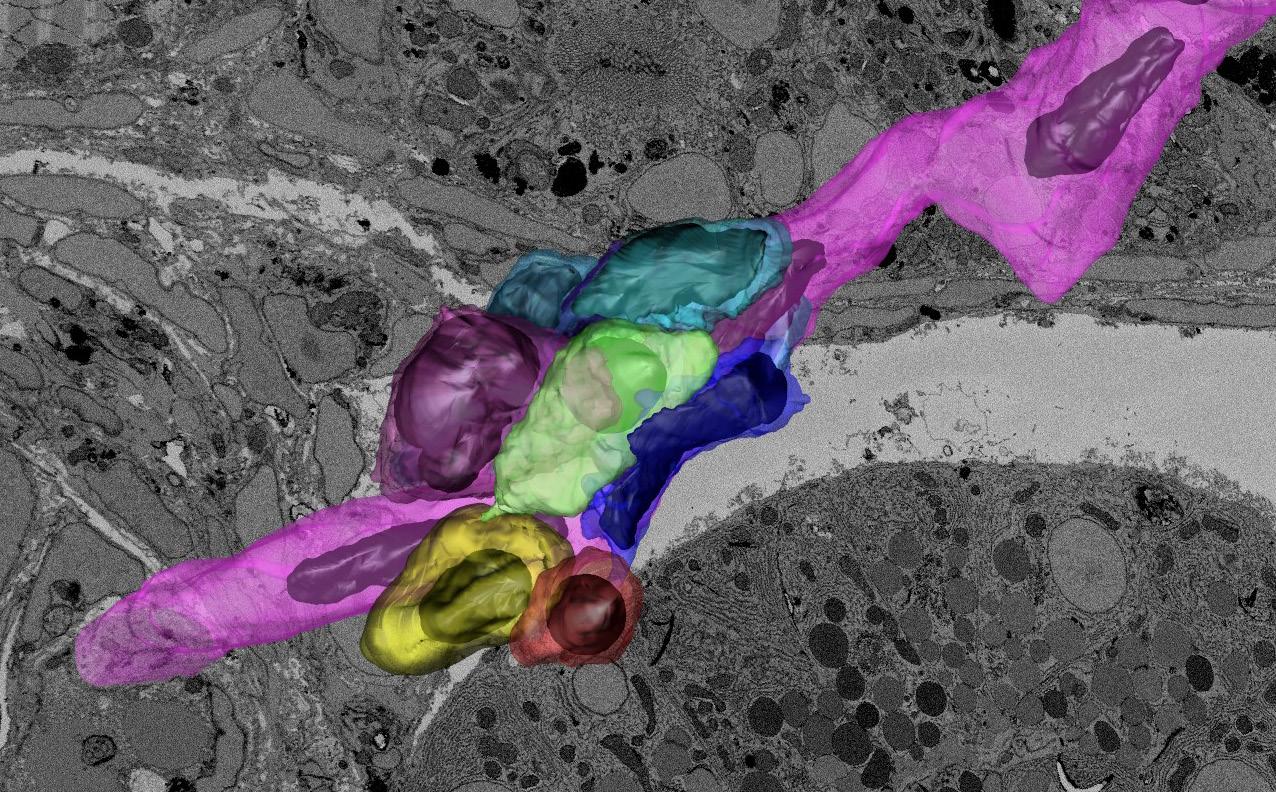WORKING TO SUCCEED
Big Things are Happening at CRB





Dan Greenspan, who served as the first interim chair of the department and Dr. Joe Kemnitz, who served as the interim chair prior to my joining the department. Their leadership was critical to launching the CRB department we are today. Currently, the department is comprised of 20 primary faculty members, with still a bit of room to grow! WIMR II, 4th floor is now a bustling research area and we look forward to many years of high-impact research in cell and regenerative biology.
Being offered the position of Chair of Cell and Regenerative Biology in the fall of 2018 was one of the biggest thrills of my professional career. I earned my PhD here at UW-Madison in the 1990s and then went on to do my postdoc and the first 15 years of my independent career outside Wisconsin. Having launched my academic career here, and having met my husband, Jon, as well as giving birth to my first child here in Madison, left us with nothing but happy memories about Madison. We were happy to return to find Madison the same dynamic, active, fun town of our memories. Further, the opportunity to come into a department that was new but had already been building its future with the previous hiring of six Assistant Professors was even more exciting. The enthusiasm of these new faculty and the devotion of more senior faculty to the success of these new faculty was truly inspiring. Faculty members have garnered major (and multiple) R01s and other major funding and have become full participants in the department’s teaching and training mission as well.



Through the continued concerted effort of many, the department has continued to grow. Many of our original faculty had postponed hard-earned and well-deserved retirements in order to continue to contribute to CRB’s mission and to mentor junior faculty. Some have now taken leave of these full-time duties to pursue fruitful retirements. These include Dr.
It would be more than remiss for me to not include a tremendous shout-out to the staff who have been essential in our success and continued growth. Our departmental staff is capably led by Mike Ferree, our Department Administrator. We were lucky enough to hire him just a few months after I joined CRB and I cannot imagine how we could have managed without his capable administrative skills and leadership. He has truly kept our ship sailing through more than a few storms! Paula Schumann is a Financial Specialist who has worked with CRB for more than five years. She is the conduit for all ordering in the department and has also played key roles in our departmental social events – being lead judge and judging coordinator for gingerbread house decorating contests, pumpkin-carving contests and best lab Halloween costume contests (see below)! Colleen Dickey, our capable Administrative Assistant is the first person anyone visiting our floor will see out front, and she is also working behind the scenes on virtually everything the department does, from its teaching, seminar series, and brown bags to web design and maintenance, departmental communications, calendar management and room reservations for our activities. Our newest administrative staff member, Courtney Griese, Research Administrator, is taking on the enormous duty of managing grant pre- and postaward finances and administration. Our HR Business Partner, Jen Scheur, has been drawn away from Madison with her husband’s new job, but continues to provide service to us from her new home in Illinois. We are also supported by shared services in Finance, IT and other
HR services in the School of Medicine and Public Health.
I want to send a personal THANK YOU to each and every member of CRB, past and present, and the many faculty, trainees and staff who have contributed to CRB and the former departments of Anatomy, Physiology, and Pharmacology. I look forward to CRB’s continued growth and recognize the many individual efforts that make our group efforts a success. I invite you to page through the rest of this newsletter to read a bit more about our history, current activities and recent research highlights in the departmentand the generous gift by the Fallon family that allowed CRB to name one of our conference rooms after John Fallon, PhD, a former faculty member and mentor to many. This gift also is providing endowed training funds to support continued research and training in the department.
Best wishes to all for a happy and prosperous 2023. On Wisconsin!
The Department of Cell and Regenerative Biology (CRB) was created in 2010 as part of a realignment of the UW-SMPH basic science departments. The department was built with a strong commitment to interdisciplinary research and teaching centered on the cellular processes and molecular mechanisms underlying developmental and regenerative biology. Founding faculty members came from four departments: Anatomy; Physiology; Pharmacology; and Pathology:
• Grace Boekhoff-Falk, Ph.D. (from Anatomy, Associate Professor, neural regeneration)
• Emery Bresnick, Ph.D. (from Pharmacology, Professor, hematopoietic development and cancer)
• Karen Downs, Ph.D. from Anatomy, retired as Professor)
• Daniel Greenspan, Ph.D. (from Pharmacology, retired as Professor)
• Anne Griep, Ph.D., (from Anatomy, Professor, eye development)
• Colin Jefcoate, Ph.D. (from Pharmacology, retired as Professor)
• Patti Keely, Ph.D. (from Pharmacology, former Professor and Chair, deceased)
• Joe Kemnitz, Ph.D. (from Physiology, retired as Professor)
• Youngsook, Lee, Ph.D. (from Anatomy, Associated Professor, cardiac development)
• Gary Lyons, Ph.D. (from Anatomy, retired as Professor)
• Richard Moss, Ph.D. (from Physiology, retired as Professor and Associate Dean for Basic Research)
• Jamie Thomson, Ph.D., D.V.M. (from Anatomy, retired as Professor)
• Beth Weaver, Ph.D. (from Pharmacology, Associate Professor, chromosome segregation)
• John Fallon, Ph.D. (from Anatomy, retired as Professor, deceased)
Many of the founding faculty, originally distributed in multiple buildings around the UW campus, moved to the fourth floor of the Wisconsin Institutes for Medical Research (WIMR) in 2013. CRB was led by an interim chair, Dan Greenspan, Ph.D, from its inception in 2010 until 2015. During his tenure, he recruited CRB’s first two new faculty:
• Rupa Sridharan, PhD (2012, promoted to Associate with tenure in 2019) Dr. Sridharan’s research focuses on the epigenetic mechanisms controlling reprogramming of induced pluripotent stem cells.
• Ying Ge, PhD (2012, promoted to Associate with tenure in 2019, Full Professor in 2022) Dr. Ge’s group specializes in developing new methods for top-down proteomics, and their uses in studying heart development and regeneration.
In 2015, Patti Keely, Ph.D became the inaugural chair of the department. Sadly, she passed away less than two years after assuming the chair position. Dr. Keely recruited five outstanding new faculty to CRB during her brief time as chair:
• Barak Blum, PhD (2015, Assistant Professor) Dr. Blum’s laboratory studies morphogenesis and differentiation of the endocrine pancreas.
• Junsu Kang, PhD (2017, Assistant Professor) Dr. Kang’s group studies the genomic basis of zebrafish heart and fin regeneration.
• Ahmed Mahmoud, PhD (2017, Assistant Professor Dr. Mahmoud’s group investigates molecular and cellular mechanisms of mammalian heart regeneration.
• Ricki Colman, PhD (2017, promoted to Associate with tenure in 2022) Dr. Colman’s laboratory uses non-human primates to study the impact of nutrition and metabolism on health across the aging continuum.
• Anita Bhattacharyya, PhD (2017, Assistant Professor) Dr. Bhattacharyya’s group uses human pluripotent stem cells to
examines how the development of the cerebral cortex is altered in genetic developmental disorders, including Down syndrome and Fragile X syndrome.
Joseph Kemnitz, Ph.D served as the department’s second interim chair from 2017-2018 while a new permanent chair was recruited. In 2018, Deneen Wellik was recruited to Wisconsin to serve as chair of the department. Five new faculty have been recruited to the department since then:
• Owen Tamplin, PhD (2020, Assistant Professor) Dr. Tamplin’s research focuses on hematopoietic stem cells, and how they interact with their specialized microenvironmental niche.
• Valentina Lo Sardo, PhD (2020, Assistant Professor) Dr. Lo Sardo’s group uses human induced pluripotent stem cells to study human-specific genetic risk factors for cell differentiation and cell fate decisions in cardiovascular disease and cancer.

• Suzanne Ponik, PhD (2020, Assistant Professor) Dr. Ponik’s laboratory studies the specific signaling pathways regulated by cell interactions with the extracellular matrix, and how these pathways are involved in the progression of breast cancer
• Marjorie Brand, PhD (2023, will join as Full Professor with tenure) Dr. Brand’s laboratory focuses on regulation of gene expression at the level of transcription and chromatin to decipher the mechanisms controlling hematopoietic stem cell differentiation and the dysregulation of this process that leads to leukemia
• F. Jeffrey. Dilworth, PhD (2023, will join as Full Professor with tenure) Dr. Dilworth’s research is focused on how muscle stem cells work to regenerate muscle tissue and how the environment they live in can influence their ability to repair muscle damage.
Since 2010, seven of the 14 founding members have retired and 14 new faculty have been recruited. Since its inception, the department also has gained 4 joint faculty and 11 faculty affiliates, allowing us form an interdisciplinary group of faculty engaged in our joint mission.
Joint faculty: Timothy Kamp, MD, PhD, Pamela Kreeger, PhD, Bo Liu, PhD, Igor Slukvin, MD, PhD.
Affiliate faculty: Wade Bushman, MD, Feyza Engin, PhD, Judith Kimble, PhD, Michelle Kimple, MD, Darcie Moore, PhD, Philip Newmark, PhD, Sean Palecek, PhD, Lynn Schnapp, MD, Nader Sheibani, PhD, Hector Valdivia, PhD, Carole Wilson, PhD.
Together, the department members today are striving towards achieving excellence in all we do as we aim to become international leaders in cell and regenerative biology. Our community has become a vibrant and active group of scientists, engaged in the highest levels of research, teaching and service to the university, the State of Wisconsin and beyond.
The Blue Ridge Institute for Medical Research ranks U.S. Medical Schools by their levels of National Institutes of Health (NIH) grants each year. The metric is used by medical schools and departments to compare and contrast their institution against peers in their areas of research emphasis and specialty by both School and by individual Principal Investigator.

For the 2021 rankings, we are extremely proud to report that the UW Department of Cell and Regenerative Biology received a national ranking of #9 for All U.S. University Medical School Anatomy/Cell Biology programs!

Additionally, we are honored to also report that Dr. Anita Bhattacharyya (Neurodevelopmental Disorders) was the 2021 Blue Ridge Ranked #1 PI in the country!!! Congratulations Anita!
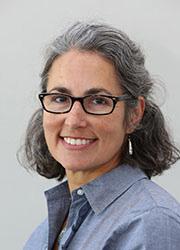

Heart failure is a major public health burden and is the leading cause of death in Wisconsin. In response to heart attacks, humans (and other mammals) are unable to repair the damaged heart tissue. Instead, scar tissue forms in place of healthy heart tissue. Early in Dr. Ahmed Mahmoud’s career, he showed that neonatal mice are capable of fully regenerating their hearts following injury, but this regenerative window closes only days after birth. By examining the differences between the response of neonatal mice and adult mice, Dr. Mahmoud and his laboratory identified a specific metabolic switch (from glycolysis to fatty acid oxidation) that exactly coincides with the closing of this regenerative window. Remarkably, they demonstrated that inhibition of a critical enzyme needed for use of this switch in metabolism (mitochondrial succinate dehydrogenase) in adult mice permits in restoration of the regenerative state! By treating adult mice with this inhibitor, even two days after the myocardial infarction, the team observed complete restoration of cardiac structure and function. This exciting work was published in Circulation in 2021. The Mahmoud laboratory is currently pursuing succinate dehydrogenase as an important therapeutic target to promote adult heart regeneration in larger mammals with the hopes of translating this to humans.
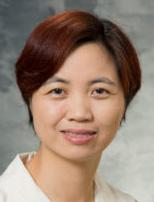
Ying Ge has established an interdisciplinary research program that cuts across the boundaries of chemistry, biology, and medicine. By creatively integrating her expertise in analytical chemistry/proteomics with cardiac biology/medicine, her laboratory is working to gain new molecular insights into the mechanisms underlying cardiac disease and heart regeneration, and to translate these bench discoveries to the clinic. Recently, her lab employed cutting-edge topdown proteomics to analyze human heart tissue samples from hypertrophic cardiomyopathy patients which revealed a common pattern of altered sarcomeric proteoforms across these tissues despite non-similar mutations in these patients. This opens the door for the development of therapeutic interventions that target these unique proteoforms rather than individual genotypes. Her team has also developed a novel nanoproteomics method for the enrichment and analysis of cardiac troponin I, a cardiac biomarker that can be measured directly from serum, providing highresolution analysis of specific disease phenotypes (Nature Communications 2020). Importantly, this finding will impact future patient care as physicians could utilize proteomics for better diagnosis of cardiac patients. Moreover, Dr. Ge’s lab continues to actively strive to develop innovative -omics technologies to identify new biomarkers for early cancer detection and therapeutic monitoring towards the goal of providing meaningful precision medicine diagnosing that will permit effective, patient-specific treatment. Dr. Ge has earned many awards in the past several years, including the highly prestigious Georges Guiochon Faculty Fellowship in 2016, the H. I. Romnes Faculty Fellowship in 2018, the 2020 prominent Biemann Medal from the American Society of Mass Spectrometry, and the Human Proteome Organization (HUPO) Clinical and Translational Proteomics Award in 2021. CRB looks forward to watching Dr. Ge’s program flourish for many years to come.
Beth Weaver and her laboratory study the commonly used chemotherapy drug paclitaxel (TaxolTM). Currently, only about half of patients benefit from paclitaxel therapy, but there’s no way to predict which patients these will be. Paclitaxel is known to interfere with cancer cell replication, whereby a cell makes an exact copy of its chromosomes (the instruction manual for the cell) before divides to produce two equivalent cells, a process known as mitosis. When paclitaxel entered clinical trials in 1984, it had been shown that the high concentrations typically used in cell models in the laboratory causes cells to get stuck in mitosis and then die. It was assumed that paclitaxel acts the same way in patient tumors. However, research in the Weaver laboratory, in collaboration with UW breast oncologist Dr. Mark Burkard’s group, found that the dose of paclitaxel that gets into patient breast cancers isn’t high enough to cause cells to get stuck in mitosis. By going back to the laboratory using clinically relevant paclitaxel concentration in cancer cells and following them over three days using timelapse microscopy, they found that the cells do proceed through mitosis. But instead of dividing in two equivalent cells, the cells often divided in 3 or 4 or 5 directions, a pathway that leads to cell death. By going back to examine patient tumors, they found patient cancers cells also showed this response. Interestingly, in about half of the human patients, as subset of cells overcame the mitosis block, leading to paclitaxel resistance. This work was published in Science Translational Medicine in 2021. With this new understanding of how paclitaxel acts in patient tumors, the Weaver lab is now focused on optimizing the clinical use of paclitaxel by developing a biomarker to predict which patients will respond to paclitaxel and methods to sensitize paclitaxel-resistant tumors.

The Wisconsin Blood Cancer Research Institute (WBCRI) was initiated in 2020 to serve as a center of excellence for research and discovery in hematopoiesis and how dysregulation leads to blood cancers. Emery Bresnick, PhD, Gary Felsenfeld Professor of Cell and Regenerative Biology, was chosen to lead this highly collaborative organization at UW-Madison. His longstanding expertise in this area provides outstanding leadership to this initiative. The main goal of this organization of researchers is to utilize multidisciplinary approaches to discover blood cancer mechanisms, advance blood cancer diagnosis, prevention and treatment, train research leaders, and serve as an advisory hub for the community. The guiding principles include innovation, collaboration, synergism, collegiality, inclusiveness and diversity. With a leading role in establishing and harnessing momentum in this area, research groups in WBCRI innovate strategies to detect blood cancers before they become life threatening and to unveil disruptions in molecular circuitry that drives blood cancers. Ultimately, the hope is that this work will enable the development of rational, mechanism-based therapies. WBCRI has successfully recruited its first new hire in this area, Marjorie Brand, PhD, who will join WBCRI and CRB in early 2023. WBCRI continues to actively recruit faculty to join this institute and its mission.

In early 2014, CRB moved west from its’ original location in the Medical Sciences Center at 1300 University Ave. to a new location located in new West Tower of The Wisconsin Institutes for Medical Research (WIMR) at 1111 Highland Ave.
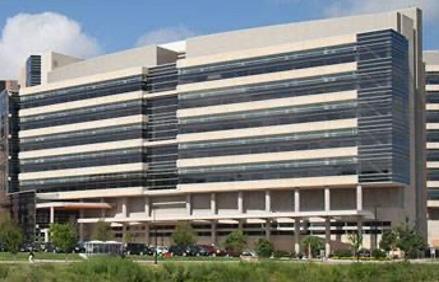
Composed of a three-phase structure project consisting of adjacent research towers, the WIMR complex is designed to bring research and clinical scientists together to work across disciplines and move basic discoveries more quickly from lab to bedside and into the community. The WIMR facility is attached to the University of Wisconsin Hospitals & Clinics (UWHC), the American Family Children’s Hospital (AFCH), and the School of Medicine and Public Health’s Health Sciences Learning Center (HSLC). Also housed in adjacent buildings are the School of Pharmacy, the Waisman Center, and the School of Nursing. The location in close proximity to these facilities makes it wellpositioned for easy interactions among WIMR scientists, their health sciences colleagues, practicing clinicians, pharmacists, and the patients whose lives they hope to improve. Laboratory floors are designed to facilitate interaction and synergize discovery.
Laboratories feature an open configuration with shared procedure rooms and integrated IT support all closely coupled to appropriate office and collaboration space. Each floor is comprised of 30,000 assignable square feet of space including laboratory and offices. Each floor accommodates ~18 principal investigators, organized by department and/or research theme. The facility also includes the home of the University of Wisconsin Carbone Cancer Center, shared services such as a Comprehensive Imaging Center with modalities for both humans and animals, a large rodent facility, a high-throughput small-molecule screening facility, the UWMadison Optical Imaging Core, a National Center for Research Resources (ORIP)-supported primate vivarium with specialized facilities for awake non-human primate neuroscience, and a large Proteomics/Epigenetics/Molecular Diagnostic Laboratory.
While CRB is primarily located on the 4th floor of WIMR’s West Tower, CRB PIs also can be found in WIMR’s East tower, in the adjacent Waisman Center, and in the Wisconsin Institutes for Discovery Building on central campus at 330 N. Orchard.
The Cell and Regenerative Biology (CRB) Department is currently a nurturing house of 65 trainees, a number including 77 graduate students, 11 postdoctoral fellows, 25 undergraduate students, and 9 post-baccalaureate researchers. Our graduate students are a diverse group of young scientists coming from different disciplines and PhD programs, including Cellular and Molecular Biology, Genetics, Endocrinology and Reproductive Physiology, Pharmacological Sciences, Cancer Biology, Comparative Biomedical Sciences, Molecular and Cellular Pharmacology, Cellular and Molecular Pathology, Chemistry, Biomedical engineering. We have collected information on the success of our trainees in the past three years and wanted to congratulate them for their achievements. Numerous trainees (13) are part of T32 Training Programs at UW-Madison, including: Genetics, Endocrinology and Reproductive Physiology, Hematology, Cardiovascular Research Center, Molecular and Cellular Pharmacology and Cancer Biology. Five trainees are currently supported by F31/F32 NIH fellowships and eleven are funded by other foundations, including the National Science Foundation (NSF) and the American Heart Association (AHA). The CRB generation of scientists in training has received and continues to receive numerous awards at national and international conferences for their remarkable work, their participation and presentation. While we value the tireless daily work of our trainees, we want to publicly congratulate them for their achievements, showing competitiveness and excellence at national and international level. Their efforts and accomplishments are an excellent reward for the entire faculty community of CRB that constantly strive to support and encourage excellence in science.
John Fallon was appointed Assistant Professor of Anatomy at the University of Wisconsin-Madison on January 1, 1969, after earning the Ph.D. degree in Biology at Marquette University. He was promoted to Professor of Anatomy in 1981 was a member of the faculty for 41 years until his retirement in 2009. He remained an active emeritus for several years after his retirement and moved with the new Department of Cell and Regenerative Biology (CRB) to WIMR II in 2014. During his career, John published >100 peer- reviewed original research articles, 20 review articles/book chapters and 4 edited proceedings. He was internationally recognized for his scientific contributions to the study of pattern formation during embryonic development, particularly limb development. John was also well known and respected for his willingness to share resources and expertise; many of his publications are results of productive collaborations that John forged with investigators both inside and outside of the field. John has received many awards for his scientific contributions, including being named a Fellow of The American Association for the Advancement of Science (AAAS), the UW-WARF Harland Winfield Mossman Professorship, and the American Association of Anatomists awarded him its highest honor, the Henry Gray Award in 2007.
PhDJohn also made notable and continuous contributions to his department, school and the university in teaching and service. John taught many courses in the basic sciences for medical, graduate and undergraduate students. He served on a variety of university committees, including as Chair of the Executive Committee of the Biological Sciences Division. He also was the Assistant Dean for Graduate Studies within the Medical School from 1985 to 1991 and he reinvigorated the MD/PhD program during this time. In 2019, he was honored with the Wisconsin Medical Alumni Association Basic Sciences Emeritus Faculty Award. After John’s passing in 2020, his adult children, Sean, Tim and Claire Fallon, generously sought to commemorate
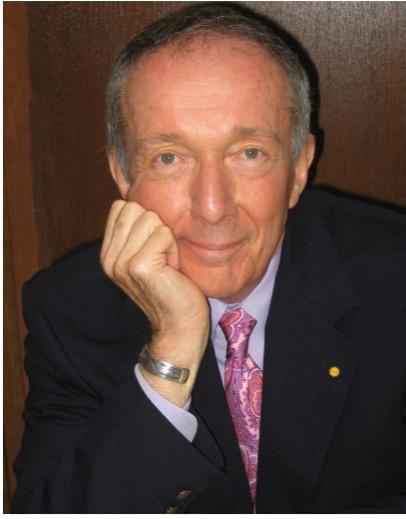
John’s passion for research, teaching and training and his commitment to the department by gifting CRB with an endowment fund to be used to further the research and training mission in regenerative biology. In their words, “Imagine a world where tissues and organs could be coaxed to regenerate after injury or resection. Continued research and training in developmental, stem cell and regenerative biology will be an integral part of reaching this goal.” Their gift, the John F. Fallon Excellence in Cell and Regenerative Biology Fund, permitted the naming of CRB’s main
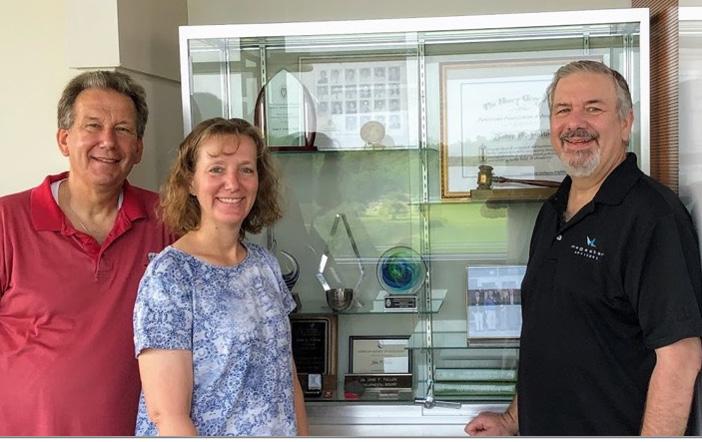
conference room in John’s honor – the Fallon Conference Room (4571 WIMR II). This endowment will be used to support graduate and postdoctoral training in the department. An immense THANK YOU from CRB to the Fallon family. CRB would be thrilled for any consideration of gifts in honor of John and on behalf of our training mission!
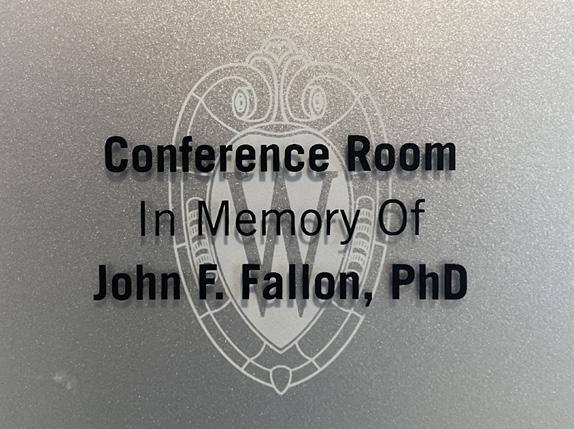
Donate Here: crb.wisc.edu/johnfallonmemorialfund/

While the mission and activities of the UW Department of Cell and Regenerative Biology is supported by the great people of the State of Wisconsin and our cutting-edge research, it is only through the generosity of our donors that allows us to fully realize our potential.

